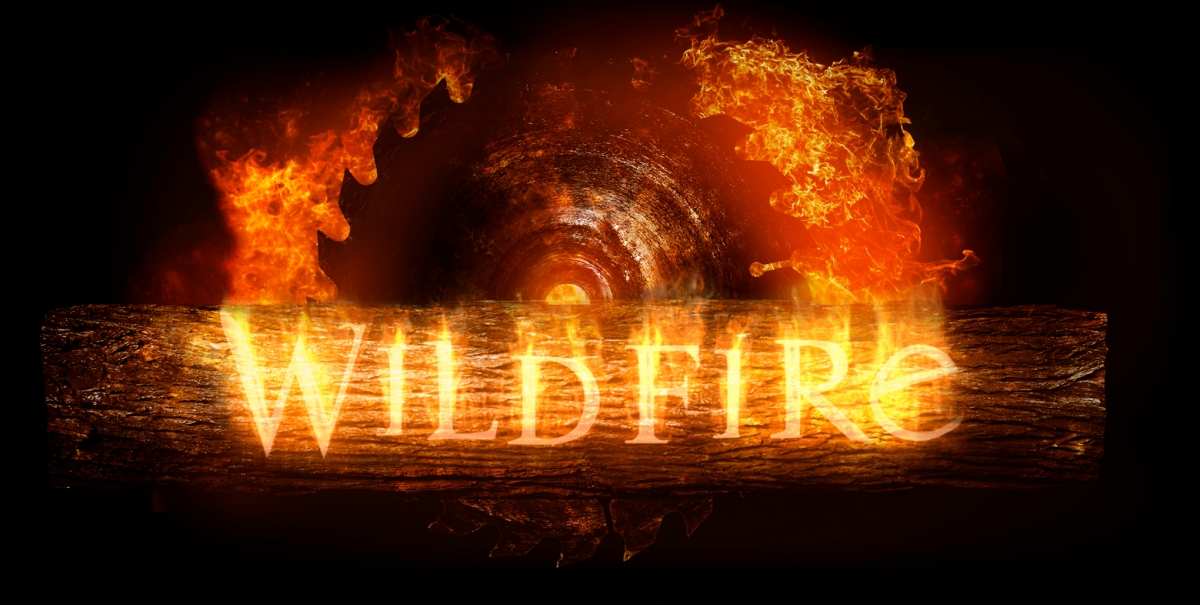
When you return to your home after a wildland fire, you should:
Obtain permission from officials before entering a burned wildland area.
Use caution and exercise good judgment when re-entering a burned wildland area. Hazards may still exist, including hot spots, which can flare up without warning.
-Check the roof immediately and extinguish any sparks or embers.
-Check the attic for hidden burning sparks. For several hours afterward, re-check for smoke and sparks throughout the home.
Avoid damaged or fallen power poles or lines, and downed wires. Immediately report electrical damage to authorities. Electric wires may shock people or cause further fires. If you come across dangerous wires, if possible, remain on the scene to warn others of the hazard until a repair crew arrives.
Watch for ash pits and mark them for safety. Ash pits are holes full of hot ashes created by burned trees and stumps. You can be seriously burned by falling into an ash pit or landing on one with your hands or feet. Warn your family and neighbors to keep clear of the pits.
Watch animals closely.
-Keep all your animals under your direct control. Hidden embers and hot spots could burn your pets’ paws or hooves.
-Pets may become disoriented, particularly because fire often affects scent markers that normally allow them to find their homes.
-Your pets may be able to escape from your home or through a broken fence. -In addition, the behavior of pets may change dramatically after a fire, becoming aggressive or defensive, so be aware of their well-being and take measures to protect them from hazards, including displaced wild animals, and to ensure the safety of other people and animals.
If there is no power, check to make sure the main breaker is on. Fires may cause breakers to trip. If the breakers are on and power is still not present, contact the utility company.
Take precautions while cleaning your property. You may be exposed to potential health risks from hazardous materials.
-Keep children away from these hazardous sites.
-Debris should be wetted down to minimize health impacts from breathing dust particles.
-Use a two-strap dust particulate mask with nose clip and coveralls for protection.
-Wear leather gloves and heavy-soled shoes to protect hands and feet from sharp objects while removing debris.
-Wear rubber gloves when working with outhouse remnants, plumbing fixtures, and sewer piping. They can contain high levels of bacteria.
-Hazardous materials such as kitchen and bathroom cleaning products, paint, batteries, contaminated fuel, and damaged fuel containers need to be properly handled to avoid risk. Check with local authorities for hazardous disposal assistance.
If you turned off the valves on a propane tank system, contact the propane supplier, and leave the valves closed until the supplier inspects your system. Tanks, brass and copper fittings, and lines may have been damaged by the heat and be unsafe. If fire burned the tank, the pressure relief valve probably opened and released the contents.
If you have a heating oil tank system, contact a heating oil supplier for an inspection of your system before using it. An outside tank may have shifted or fallen from the stand and fuel lines may have kinked or weakened. Heat from the fire may have caused the tank to warp or bulge. Non-vented tanks are more likely to bulge or show signs of stress. The fire may have loosened or damaged fittings and filters.
Be careful around burned trees and power poles.. Any tree or power pole that has been weakened by fire may be a hazard. Winds are normally responsible for toppling weakened trees and poles. The wind patterns in your area may have changed as a result of the loss of adjacent tree cover.
-Look for burns on the tree trunk. If the bark on the trunk has been burned off or scorched by very high temperatures completely around the circumference, the tree will not survive. If fire has burned deep into the trunk, the tree should be considered unstable.
-Look for burned roots by probing the ground with a rod around the base of the tree and several feet away from the base. Roots are generally six to eight inches (15 to 20 centimeters) below the surface. If the roots have been burned, the tree could be toppled by wind.
-A scorched tree is one that has lost part or all of its leaves or needles. Healthy deciduous trees are resilient and may produce new branches and leaves as well as sprouts at the base of the tree. Evergreen trees may survive when partially scorched. An evergreen tree that has been damaged by fire is subject to bark beetle attack. Seek professional assistance from the state forestry office concerning measures for protecting evergreens from bark beetle attack.
Discard food that has been exposed to heat, smoke, or soot. The high temperatures of fire and its by-products can make food unsafe.
If you are in doubt about the safety of your water, contact local public health officials. Wells at undamaged homes should be safe, unless affected by a fuel spill. If you use water from a public well, have a water sample collected and tested before consuming it. Water may have been contaminated with bacteria due to a loss of water pressure in the plumbing.
Stay out of a canyon below a burned hill or mountain if there is even a chance of rain. Such canyons are dangerous if it has rained heavily recently, if it is currently raining in the canyon, or if it is raining or could rain in the hills or mountains above the canyon. Risks for mudslides and debris flows are high in such burned areas for three to five years after a wildland fire.

